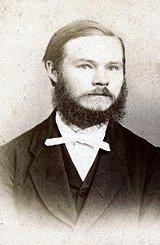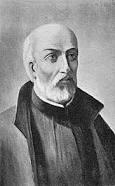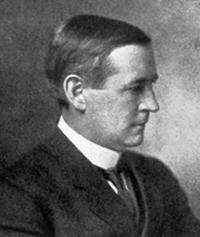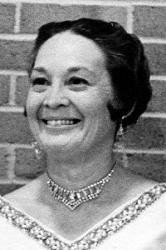Planning worship?
Check out our sister site, ZeteoSearch.org,
for 20+ additional resources related to your search.
- |
User Links
Person Results
‹ Return to hymnal







Export as CSV
John W. Work

1901 - 1967 Person Name: John W. Work, Jr. Hymnal Number: 21 Adapted of "Go, Tell It on the Mountain" in Chalice Carols John Wesley Work III (1901-1967)
Composer, educator, choral director, and ethnomusicologist John Wesley Work III was born on June 15, 1901, in Tullahoma, Tennessee, to a family of professional musicians. His grandfather, John Wesley Work, was a church choir director in Nashville, where he wrote and arranged music for his choirs. Some of his choristers were members of the original Fisk Jubilee Singers. His father, John Wesley Work Jr., was a singer, folksong collector and professor of music, Latin, and history at Fisk, and his mother, Agnes Haynes Work, was a singer who helped train the Fisk group. His uncle, Frederick Jerome Work, also collected and arranged folksongs, and his brother, Julian, became a professional musician and composer.
Work began his musical training at the Fisk University Laboratory School, moving on to the Fisk High School and then the university, where he received a B.A. degree in 1923. After graduation, he attended the Institute of Musical Art in New York City (now the Julliard School of Music), where he studied with Gardner Lamson. He returned to Fisk and began teaching in 1927, spending summers in New York studying with Howard Talley and Samuel Gardner. In 1930 he received an M.A. degree from Columbia University with his thesis American Negro Songs and Spirituals. He was awarded two Julius Rosenwald Foundation Fellowships for the years 1931 to 1933 and, using these to take two years leave from Fisk, he obtained a B.Mus. degree from Yale University in 1933.
Work spent the remainder of his career at Fisk, until his retirement in 1966. He served in a variety of positions, notably as a teacher, chairman of the Fisk University Department of Music, and director of the Fisk Jubilee Singers from 1947 until 1956. He published articles in professional journals and dictionaries over a span of more than thirty years. His best known articles were "Plantation Meistersingers" in The Musical Quarterly (Jan. 1940), and "Changing Patterns in Negro Folksongs" in the Journal of American Folklore (Oct. 1940).
Work began composing while still in high school and continued throughout his career, completing over one hundred compositions in a variety of musical forms -- for full orchestra, piano, chamber ensemble, violin and organ -- but his largest output was in choral and solo-voice music. He was awarded first prize in the 1946 competition of the Federation of American Composers for his cantata The Singers, and in 1947 he received an award from the National Association of Negro Musicians. In 1963 he was awarded an honorary doctorate from Fisk University.
Following Work's collection Negro Folk Songs, the bulk of which was recorded at Fort Valley, he and two colleagues from Fisk University, Charles S. Johnson, head of the department of sociology (later, in October 1946, chosen as the university's first black president), and Lewis Jones, professor of sociology, collaborated with the Archive of American Folk Song on the Library of Congress/Fisk University Mississippi Delta Collection (AFC 1941/002). This project was a two-year joint field study conducted by the Library of Congress and Fisk University during the summers of 1941 and 1942. The goal of the partnership was to carry out an intensive field study documenting the folk culture of a specific community of African Americans in the Mississippi Delta region. The rapidly urbanizing commercial area of Coahoma County, Mississippi, with its county seat in Clarksdale, became the geographical focus of the study. Some of the correspondence included in this collection between Work and Alan Lomax, then head of the Archive of American Folk Song, touches on both the Fort Valley and the emerging Fisk University recording projects.
John Wesley Work died on May 17, 1967.
--memory.loc.gov/ammem/ftvhtml/
John W. Work
Federico Fliedner

1845 - 1901 Person Name: Frederico Fliedner Hymnal Number: 23 Translator of "O Thou Joyful/Oh Santisimo!" in Chalice Carols [Friedrich Ludwig Fliedner, Fritz Fliedner]
Born: June 10, 1845, Kaiserswerth, Düsseldorf, Germany.
Died: April 25, 1901, Madrid, Spain, of typhus.
Buried: Civil cemetery, Madrid, Spain.
Son of Theodor Fliedner, founder of the Kaiserswerth Deaconess Institute, Federico was educated at the Gymnasium in Gütersloh, studied theology at Halle (1864-46) and earned his PhD at Tübingen (1867). He served as a nurse in the Austro-Prussian war of 1866, and taught school for a year in rural Hilden. After ordination in 1870, he left Germany to be a missionary to Spain, settling in Madrid and becoming a chaplain at the German embassy. He learned Spanish, attended a Spanish high school, and studied medicine at the Universidad Central.
Fliedner was instrumental in creating what is now known as the Iglesia Evangélica Española. In 1873, Fliedner founded the Librería Nacional y Extranjera, an extensive collection of text books and periodicals. Among these was The Children’s Friend, published from 1874 to 1939.
Fliedner wrote biographies of John Howard, Elizabeth Fry, missionary-explorer David Livingstone, Martin Luther (1878), and his own parents, Theodore Fliedner of Kaiserswerth (1883) and Caroline Fliedner of Kaiserswerth (1883). He also wrote an autobiography, published first in German in two volumes (Aus meinem Leben, 1901-03), then translated into Spanish and published posthumously in the Christian Magazine (Nos. 513 to 553). He started a Spanish translation of the New Testament with notes from Frenchman Edouard Faivre.
--www.hymntime.com/tch
Federico Fliedner
Henry Katterjohn
1869 - 1931 Hymnal Number: 23 Translator of "O Thou Joyful/Oh Santisimo!" in Chalice Carols Born: October 24, 1869, Cincinnati, Ohio.
Died: November 4, 1931.
Katterjohn was educated at Elmhurst College, Illinois (1888); Eden Seminary, Webster Groves, Missouri (1892); and Washington University, St. Louis, Missouri (MA 1919). Ordained in 1892, he pastored at Evangelical Synod churches in Urbana, Waverly, and Kenton, Ohio. From 1914 to 1921, he edited Sunday school materials. In 1924, he became professor of psychology and religion at Elmhurst College.
--www.hymntime.com/tch
Henry Katterjohn
Martin Shaw

1875 - 1958 Hymnal Number: 20 Harmonizer of "BESANÇON" in Chalice Carols Martin F. Shaw was educated at the Royal College of Music in London and was organist and choirmaster at St. Mary's, Primrose Hill (1908-1920), St. Martin's in the Fields (1920-1924), and the Eccleston Guild House (1924-1935). From 1935 to 1945 he served as music director for the diocese of Chelmsford. He established the Purcell Operatic Society and was a founder of the Plainsong and Medieval Society and what later became the Royal Society of Church Music.
Author of The Principles of English Church Music Composition (1921), Shaw was a notable reformer of English church music. He worked with Percy Dearmer (his rector at St. Mary's in Primrose Hill); Ralph Vaughan Williams, and his brother Geoffrey Shaw in publishing hymnals such as Songs of Praise (1925, 1931) and the Oxford Book of Carols (1928). A leader in the revival of English opera and folk music scholarship, Shaw composed some one hundred songs as well as anthems and service music; some of his best hymn tunes were published in his Additional Tunes in Use at St. Mary's (1915).
Bert Polman
Martin Shaw
Jean de Brébeuf

1593 - 1649 Person Name: Jean de Brebeuf Hymnal Number: 28 Author of "Twas in the Moon of Wintertime" in Chalice Carols Jean de Brébeuf, Jesuit missionary, born at Condé-sur-Vire in Normandy, 25 March, 1593; died in Canada, near Georgian Bay, 16 March, 1649. His desire was to become a lay brother, but he finally entered the Society of Jesus as a scholastic, 8 November, 1617. According to Ragueneau it was 5 October. Though of unusual physical strength, his health gave way completely when he was twenty-eight, which interfered with his studies and permitted only what was strictly necessary, so that he never acquired any extensive theological knowledge. On 19 June, 1625, he arrived in Quebec, with the Recollect, Joseph de la Roche d' Aillon, and in spite of the threat which the Calvinist captain of the ship made to carry him back to France, he remained in the colony. He overcame the dislike of the colonists for Jesuits and secured a site for a residence on the St. Charles, the exact location of a former landing of Jacques Cartier. He immediately took up his abode in the Indian wigwams, and has left us an account of his five months' experience there in the dead of winter. In the spring he set out with the Indians on a journey to Lake Huron in a canoe, during the course of which his life was in constant danger. With him was Father de Noüe, and they established their first mission near Georgian Bay, at Ihonatiria, but after a short time his companion was recalled, and he was left alone.
Brébeuf met with no success. He was summoned to Quebec because of the danger of extinction to which the entire colony was then exposed, and arrived there after an absence of two years, 17 July, 1628. On 19 July, 1629, Champlain surrendered to the English, and the missionaries returned to France. Four years afterwards the colony was restored to France, and on 23 March, 1633, Brébeuf again set out for Canada. While in France he had pronounced his solemn vows as spiritual coadjutor. As soon as he arrived, viz., May, 1633, he attempted to return to Lake Huron. The Indians refused to take him, but during the following year he succeeded in reaching his old mission along with Father Daniel. It meant a journey of thirty days and constant danger of death. The next sixteen years of uninterrupted labours among these savages were a continual series of privations and sufferings which he used to say were only roses in comparison with what the end was to be. The details may be found in the "Jesuit Relations".
In 1640 he set out with Father Chaumonot to evangelize the Neutres, a tribe that lived north of Lake Erie, but after a winter of incredible hardship the missionaries returned unsuccessful. In 1642 he was sent down to Quebec, where he was given the care of the Indians in the Reservation at Sillery. About the time the war was at its height between the Hurons and the Iroquois, Jogues and Bressani had been captured in an effort to reach the Huron country, and Brébeuf was appointed to make a third attempt. He succeeded. With him on this journey were Chabanel and Garreau, both of whom were afterwards murdered. They reached St. Mary's on the Wye, which was the central station of the Huron Mission. By 1647 the Iroquois had made peace with the French, but kept up their war with the Hurons, and in 1648 fresh disasters befell the work of the missionaries — their establishments were burned and the missionaries slaughtered. On 16 March, 1649, the enemy attacked St. Louis and seized Brébeuf and Lallemant, who could have escaped but rejected the offer made to them and remained with their flock. The two priests were dragged to St. Ignace, which the Iroquois had already captured.
On entering the village, they were met with a shower of stones, cruelly beaten with clubs, and then tied to posts to be burned to death. Brébeuf is said to have kissed the stake to which he was bound. The fire was lighted under them, and their bodies slashed with knives. Brébeuf had scalding water poured on his head in mockery of baptism, a collar of red-hot tomahawk-heads placed around his neck, a red-hot iron thrust down his throat, and when he expired his heart was cut out and eaten. Through all the torture he never uttered a groan. The Iroquois withdrew when they had finished their work. The remains of the victims were gathered up subsequently, and the head of Brébeuf is still kept as a relic at the Hôtel-Dieu, Quebec.
His memory is cherished in Canada more than that of all the other early missionaries. Although their names appear with his in letters of gold on the grand staircase of the public buildings, there is a vacant niche on the façade, with his name under it, awaiting his statue. His heroic virtues, manifested in such a remarkable degree at every stage of his missionary career, his almost incomprehensible endurance of privations and suffering, and the conviction that the reason of his death was not his association with the Hurons, but hatred of Christianity, has set on foot a movement for his canonization as a saint and martyr. An ecclesiastical court sat in 1904 for an entire year to examine his life and virtues and the cause of his death, and the result of the inquiry was forwarded to Rome. [He was canonized in 1930. --Ed.]
--www.newadvent.org/cathen/02751b.htm
Jean de Brébeuf
Jesse Edgar Middleton

1872 - 1960 Person Name: Jesse E. Middleton Hymnal Number: 28 Translator of "Twas in the Moon of Wintertime" in Chalice Carols Middleton, Jesse Edgar. (Wellington County, Ontario, November 3, 1872--May 27, 1960, Toronto, Ont.). United Church. Although he trained as a teacher, he turned to journalism in 1895. After learning his new trade, he became the Montreal Herald's correspondent in Quebec, and was there when Ernest Myrand brough out Noels anciens de la Nouvelle-France (1899), containing a French version of the carol which Father Brebeuf, S.J., had written in 1641 for the Huron, whose descendents had handed it on by oral tradition.
He then came to Toronto as a special writer for The Mail and Empire, and from 1942 onward, for Saturday Night as well; meanwhile, he served Centennial Church as choirmaster for about 40 years. With all this, he managed to produce several books on the history of Toronto and Ontario; though not an academic, neither was he a dilettante, and the leading scholars of the province were glad to work with him. His pamphlet on The First Canadian Carol came out in 1927, simultaneously with the first volume of his History of Ontario, in which Brebeuf's mission forms the earliest fully-documented episode; hence we may believe that Middleton knew what he was about in preparing "'Twas in the moon of winter-time."
--Hugh D. McKellar, DNAH Archives
===============================
Jesse Edgar Middleton, 1872-196
Born: November 3, 1872, Pilkington, Ontario, Canada.
Died: May 27, 1960, Toronto, Canada.
Buried: Fort Macleod, Alberta, Canada.
Son of a Methodist minister, Middleton attended Dutton High School and the Strathroy Collegiate Institute, then taught school for three years. He then worked for three years as a proofreader for a publisher in Cleveland, Ohio, and later became music critic for the Mail and Empire. In 1904, he joined The News. He also led the choir at the Centennial Methodist Church, and sang in the Mendelssohn Choir.
Sources: Stulken, p. 175
Translations "’Twas in the Moon of Wintertime"
--www.hymntime.com/tch
Jesse Edgar Middleton
Hugo Jüngst

1853 - 1923 Person Name: Hugo Jungst Hymnal Number: 24 Arranger of "JUNGST" in Chalice Carols Hugo Richard Jungst Germany 1853-1923. Born at Dresden, Germany, he came from an affluent, middle-class merchant family, his father owning a factory and warehouse for French millstones. He received early piano lessons at age seven, and entered the Royal Conservatory of Music in Dresden for a six-year program of study, specializing in piano and composition. He studied with famous names of the time. In 1876 he founded the Dresden Mannergesangverein (men’s choir), which he headed until 1903. He was appointed Koniglichen (royal music director), and in 1898 royal professoir of music. He was an author, composer, and arranger known for carols, anthems, and music scores. He received several rewards in his lifetime, and perfomed internationally in Europe and America. He died in Dresden
John Perry
Hugo Jüngst
David Patrick Polk
b. 1940 Person Name: David P. Polk Editor of "" in Chalice Carols
David Patrick Polk
Frederick Jackisch
1922 - 2022 Person Name: Frederick F. Jackisch Hymnal Number: 28 Harmonizer of "JESOUS AHATONHIA" in Chalice Carols
Frederick Jackisch
Iola Brubeck

1923 - 2014 Hymnal Number: 27 Author of "God's Love Made Visible" in Chalice Carols Iola Marie Whitlock Brubeck
Born: August 14, 1923, Corning, California. Died: March 12, 2014, at her home in Wilton, Connecticut.
Iola spent her formative years in northern California, where her father worked in various locations as a forest ranger. After graduating as valedictorian of her high school class in Shasta, California, she enrolled at the College of the Pacific in Stockton, California, where she earned earned a Bachelor of Arts degree. In 1941, in the school’s concert hall, she met her future husband, jazz musician Dave Brubeck, whose career she helped manage, and for whom she wrote lyrics for many of his scores.
Sources: Findagrave, accessed 14 Nov 2016
© The Cyber Hymnal™. Used by permission. (www.hymntime.com)
Iola Brubeck


 My Starred Hymns
My Starred Hymns


